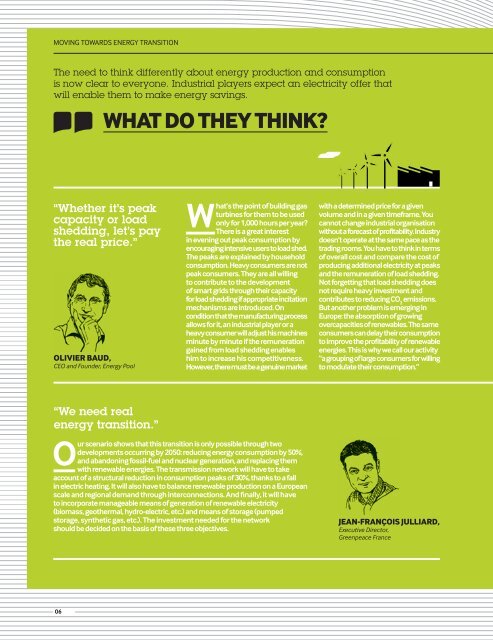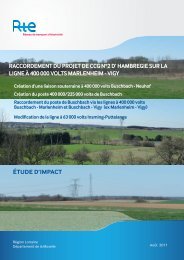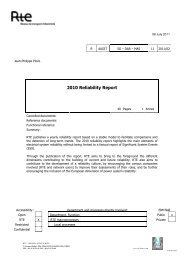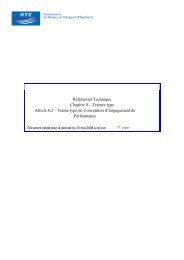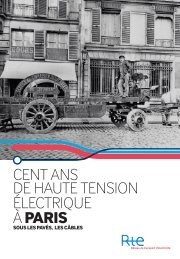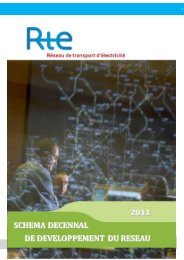2012 Activity and sustainable development report - RTE
2012 Activity and sustainable development report - RTE
2012 Activity and sustainable development report - RTE
You also want an ePaper? Increase the reach of your titles
YUMPU automatically turns print PDFs into web optimized ePapers that Google loves.
MOVING TOWARDS ENERGY TRANSITIONThe need to think differently about energy production <strong>and</strong> consumptionis now clear to everyone. Industrial players expect an electricity offer thatwill enable them to make energy savings.WHAT DO THEY THINK?“Whether it’s peakcapacity or loadshedding, let’s paythe real price.”OLIVIER BAUD,CEO <strong>and</strong> Founder, Energy Poolthe point of building gasturbines for them to be usedWhat’sonly for 1,000 hours per year?There is a great interestin evening out peak consumption byencouraging intensive users to load shed.The peaks are explained by householdconsumption. Heavy consumers are notpeak consumers. They are all willingto contribute to the <strong>development</strong>of smart grids through their capacityfor load shedding if appropriate incitationmechanisms are introduced. Oncondition that the manufacturing processallows for it, an industrial player or aheavy consumer will adjust his machinesminute by minute if the remunerationgained from load shedding enableshim to increase his competitiveness.However, there must be a genuine marketwith a determined price for a givenvolume <strong>and</strong> in a given timeframe. Youcannot change industrial organisationwithout a forecast of profitability. Industrydoesn’t operate at the same pace as thetrading rooms. You have to think in termsof overall cost <strong>and</strong> compare the cost ofproducing additional electricity at peaks<strong>and</strong> the remuneration of load shedding.Not forgetting that load shedding doesnot require heavy investment <strong>and</strong>contributes to reducing CO 2emissions.But another problem is emerging inEurope: the absorption of growingovercapacities of renewables. The sameconsumers can delay their consumptionto improve the profitability of renewableenergies. This is why we call our activity“a grouping of large consumers for willingto modulate their consumption.”“We need realenergy transition.”scenario shows that this transition is only possible through two<strong>development</strong>s occurring by 2050: reducing energy consumption by 50%,Our<strong>and</strong> ab<strong>and</strong>oning fossil-fuel <strong>and</strong> nuclear generation, <strong>and</strong> replacing themwith renewable energies. The transmission network will have to takeaccount of a structural reduction in consumption peaks of 30%, thanks to a fallin electric heating. It will also have to balance renewable production on a Europeanscale <strong>and</strong> regional dem<strong>and</strong> through interconnections. And finally, it will haveto incorporate manageable means of generation of renewable electricity(biomass, geothermal, hydro-electric, etc.) <strong>and</strong> means of storage (pumpedstorage, synthetic gas, etc.). The investment needed for the networkshould be decided on the basis of these three objectives.JEAN-FRANÇOIS JULLIARD,Executive Director,Greenpeace France06


